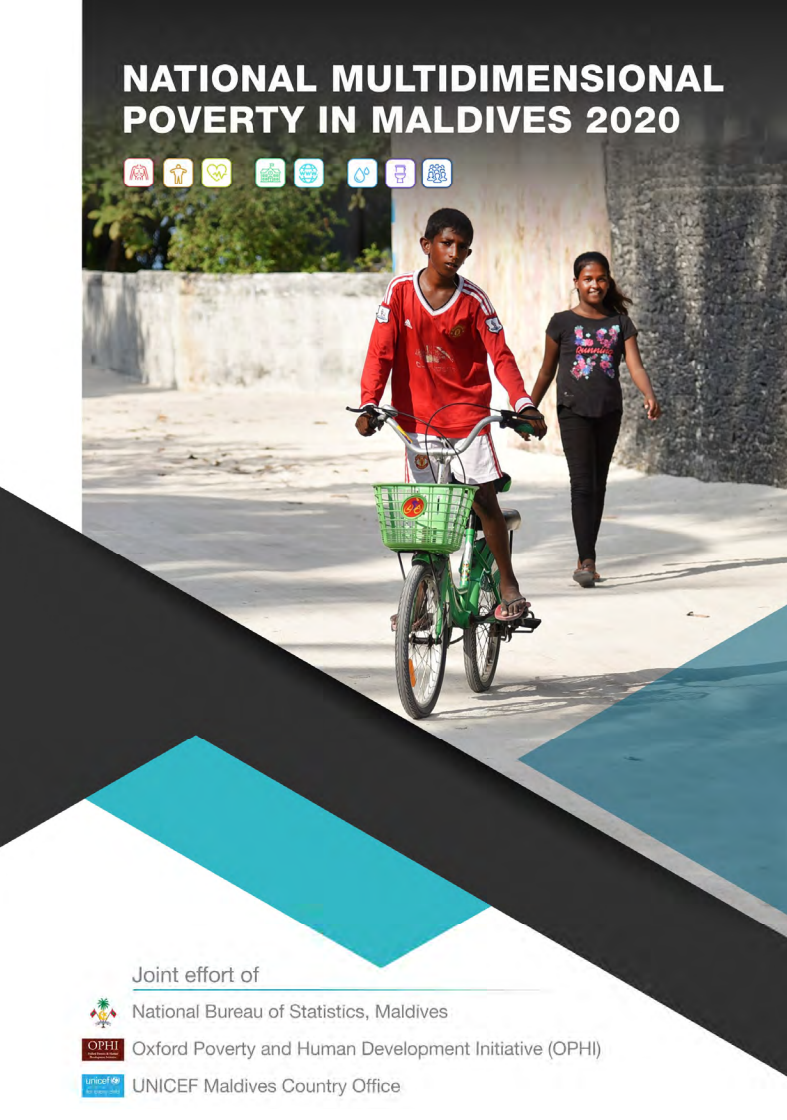National Multidimensional Poverty in Maldives 2020
This report presents the findings of the national Multidimensional Poverty Index (MPI) for Maldives. The Maldives MPI was developed by the National Bureau of Statistics in partnership with the UNICEF Regional Office South Asia (ROSA) and UNICEF Maldives with technical support from the Oxford Poverty and Human Development Initiative (OPHI).
The results are based on data from the Demographic Health Survey (DHS) 2016/17. The Maldives MPI tracks eight indicators relating to three dimensions: health, education and information, and living standards.
The MPI provides a tool to coordinate the efforts of multisectoral agencies working towards reducing inequality and poverty in the Strategic Action Plan 2019–2023, which is now being implemented in the context of the COVID-19 pandemic.
Key findings based on data 2016/2017 include:
- The incidence of poverty (H) in Maldives was 28%, and the average intensity (A) was 51%.The Multidimensional Poverty Index (MPI), which is the product of H and A, was 0.145.
- In Maldives, more people were living in multidimensional poverty (28%) than monetary poverty (8% were living below the poverty line of MVR 74).
- The report indicates that 87% of people who are multidimensionally poor were living in the Atolls, but only 13% on the populous capital island of Male’.
- At the national level, years of schooling contributed the most to overall poverty in Maldives at 19%, and access to health contributed 16%.
- Children have been bearing the greatest burden of poverty and have a higher likelihood of being multidimensionally poorer than any other age group, with one third of 0–17 year olds living in MPI poor households.
In addition to this report, a summary report is also available.



